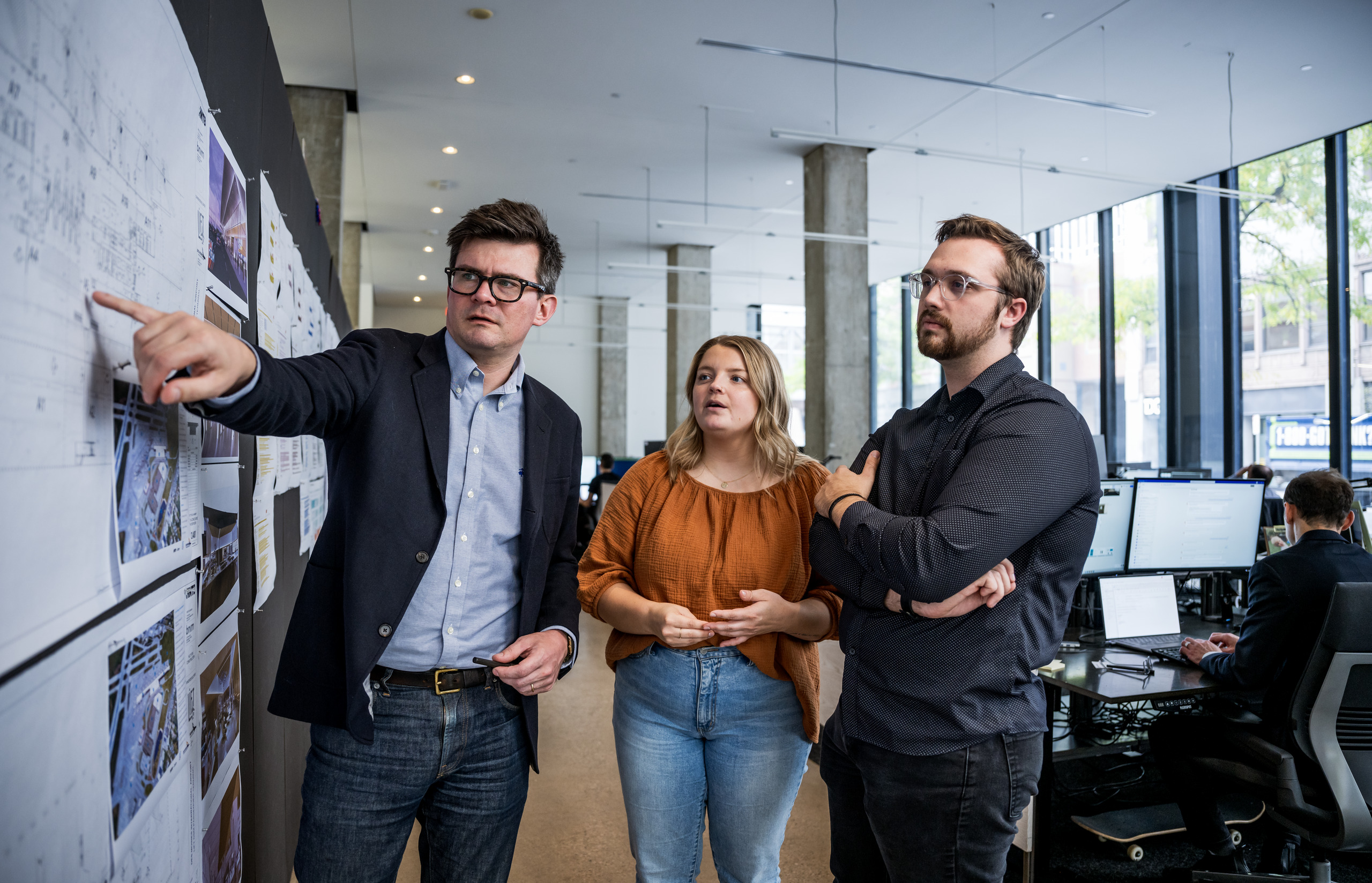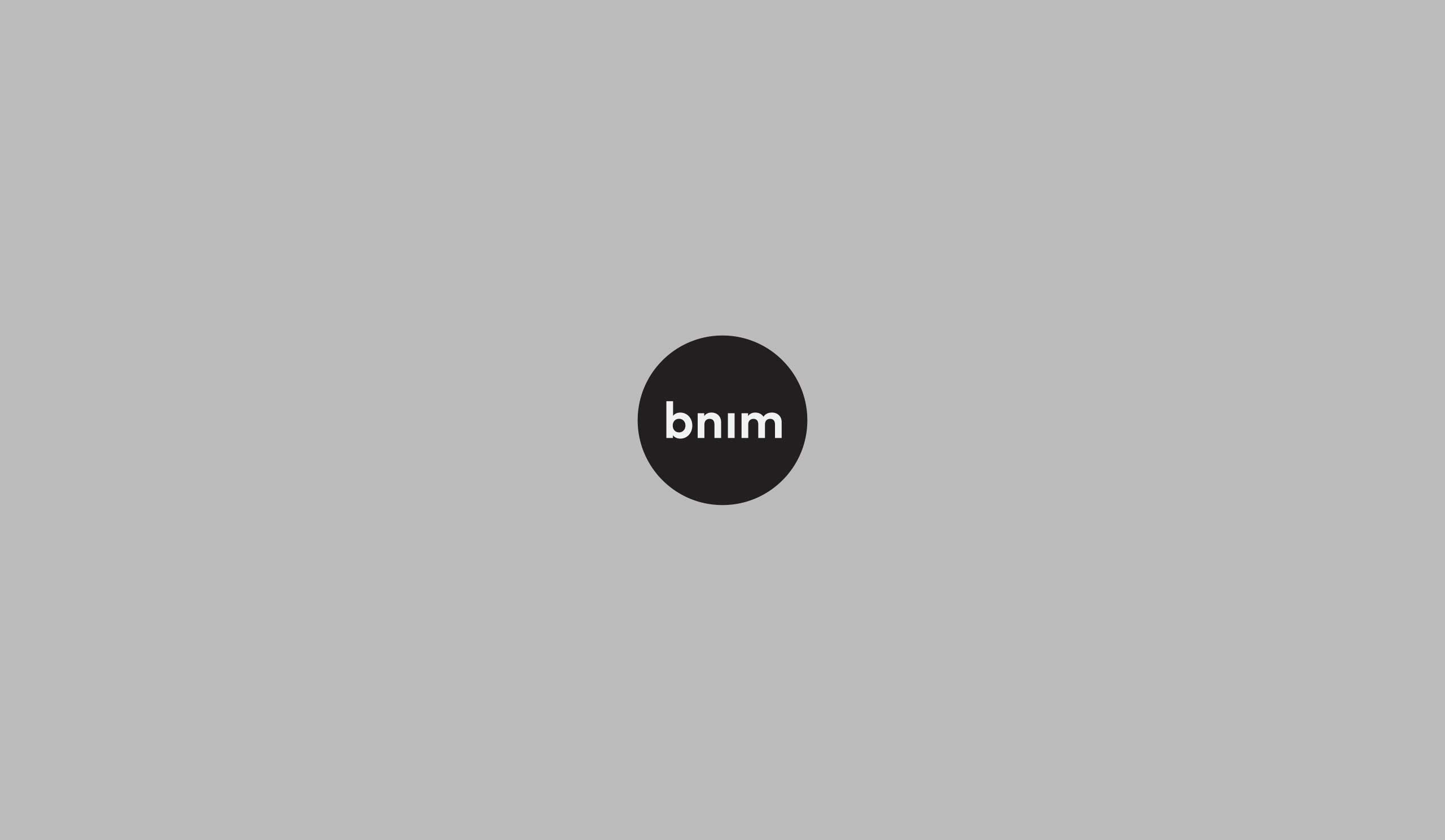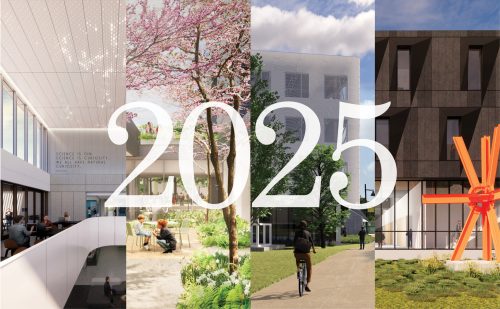
Design Process: Plurality, Collaboration, and Precision
BNIM is a pluralistic practice that embraces diversity in methods, ideas, and perspectives. We believe in an vibrant process that integrates various cultural, social, and environmental factors to influence design. We approach each project with a posture of curiosity, listening, and mutual respect. We seek to create spaces that resonate with the diverse needs and identities of users resulting in inclusive, responsible, and lively architecture.
Our process is one that identifies the host of opportunities, draws out the essence, seeks clarity through the multitude of layers and influences, and rigorously works to resolve and shape those ideas into an interconnected, holistic solution.
Our process is organized around this plurality, driven by your mission and vision.
One of the first things we do is project research and analysis to identify the different Layers of Design for the project. History, culture, climate, context, community, site considerations, program, security, accessibility, and environmental systems are some of the many layers we consider. We undertake a holistic process where we sift through these layers of inputs, considerations, adjacencies; looking for the resolved intersection of seemingly disparate considerations to reveal and shape a solution that is distinctive and an authentic expression of place. It is through this process that we are able to create solutions that solve complex problems with singular strategies, doing more with less.
Engagement and Collective Imagination
Our process is not one of dictating– we are immersed with the team; facilitating and participating in dialogue, leveraging all voices in the conversation to truly solve problems collaboratively and proactively.
In addition to our consultants, at the core of our team is the client, the stakeholders because they are most familiar with the territory and users of space. Our interactive process establishes an environment that unlocks imaginations of all parties to produce a collective, interactive, creative energy informing design ideas. We bring many voices to the table early in our process because we have found it builds trust, brings innovation, and yields extraordinary outcomes.
We believe you cannot manage what you don’t measure. Early goal setting and visioning with the client and design team is crucial for successful outcomes. Through engagement activities and visioning workshops, we work with you to develop a project vision with supporting goals. Additionally, we set project performance goals with our clients in six categories energy, water, ecology, wellness, resources, and equity through a process of benchmarking and analysis. Once established, these will be used for effective decision making throughout the life of the project.
Exploration and Cyclical Development
Throughout our process there will be an evolution of the design through cycles of feedback and revision. It is a process that asks us to hold in constant balance all aspects of function, impact, experience, and performance. It has us put on different lenses at different times so that our designs are best serving their full range of purposes. It is a methodology that invites us to ask questions.
Our process creates a safe space for critical feedback and iteration to occur, guided by project vision and goals. Internally, our animated practices include testing ideas, iterating concepts, researching materials, critical dialogue, balancing experience, beauty, function, cost, and environmental factors. We present our recommendations and ideas to the client group for feedback and continuous improvement.
Architecturally, we are interested in the process in which a response to project economies allows us to identify the essence of an idea at a particular place and bring the most critical elements into focus.
Our approach to project delivery is fundamentally based on precision and belief in the art of execution. We are interested in the craft of detail to support both the architectural idea as well as the technical performance we demand of our work.

